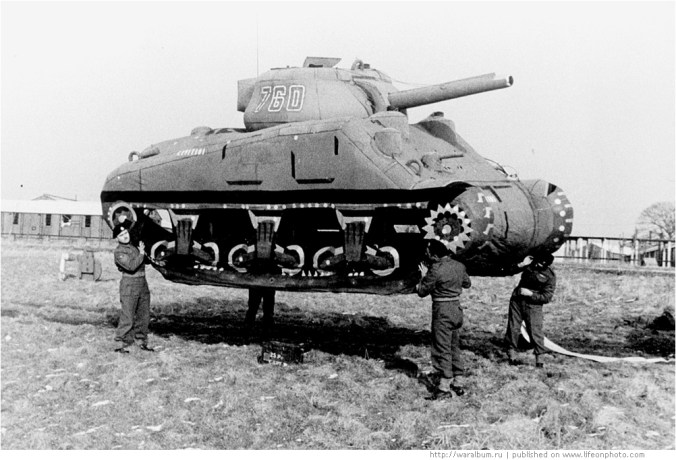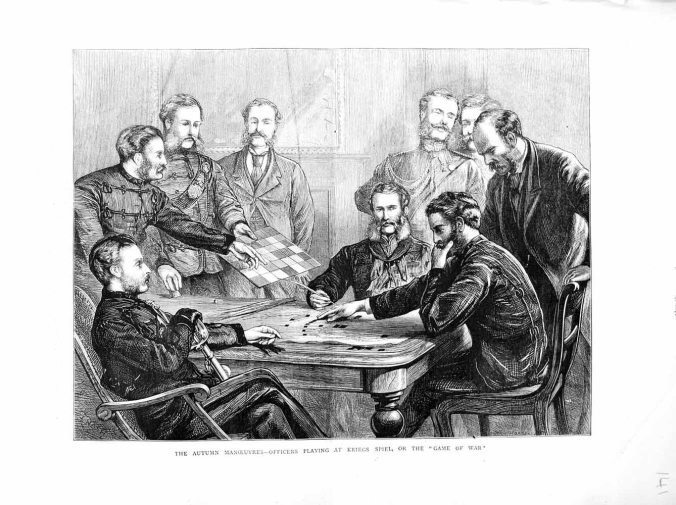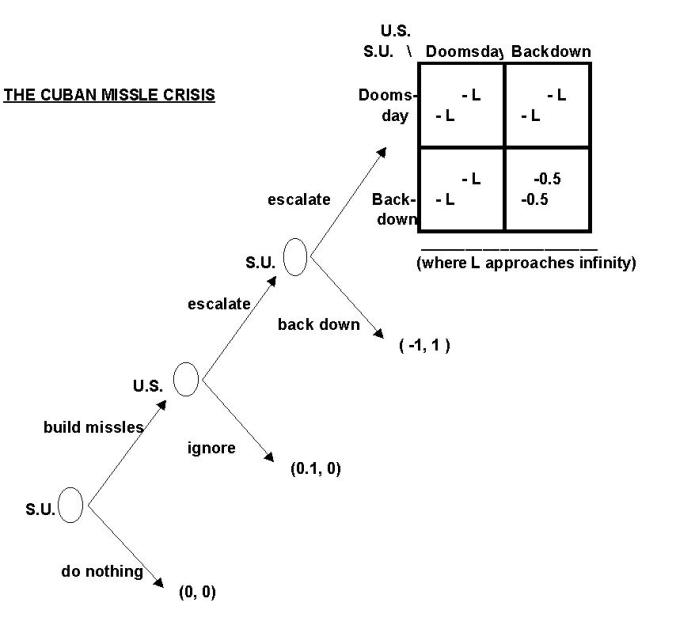This post was originally given as a talk at the Urbanomic event Simulation, Exercise, Operations held in Oxford on the 11th July 2012. Thanks to Robin Mackay for the transcription of the talk that served as a basis for the present version.
Upon reflecting on the meaning of simulation and the role it occupies in war, it strikes me that it is possible to distinguish between two distinct, if perhaps complementary, significations. There is a first signification which refers back to an older understanding of simulation and is a more etymologically faithful meaning of simulation in terms of deception, in terms of pretence, illusion, and false appearance that refers us back to the classical idea of the simulacrum as formulated by Plato. This conception of simulation invokes the notion of surface resemblance – a simulation is something that appears to be what in fact it is not. The history of the visual arts naturally provides us with numerous examples of such simulations, among others through the styles of trompe l’oeil and photorealism. Simulation here references the idea of a surface representation which may present a superficial resemblance to its object but which possesses no ontological depth. In the military context, this kind of simulation corresponds to the decoy, for example the inflatable tanks of the Second World War that may resemble tanks from a distance but which beyond that do not capture anything about what a tank actually is and how it works. Related to this is the correlated notion of dissimulation where the exercise is there not so much the representation of something that is not but the concealing of something that is, camouflage being here the obvious military referent.
Notwithstanding the significance of such practices, there is also a more contemporary meaning of simulation that will be the main object of the present post. This is a conception that is tied into the history of computing, although it does predate it, and which suggests the imitation of processes, situations and systems through the modelling of the internal characteristics and dynamics of that system and the formalisation of the constituent variables. With it comes a claim – not a claim, obviously, that we should take uncritically – to capturing some depth to whatever is being simulated, rather than simply its surface. In fact, the simulated representation might not be verisimilar and replicate our immediate phenomenological perception; it might for example merely take the form of data points on a computer printout. One common definition of a simulation that is used by computer modellers is that of “an experiment performed on a model” and indeed the concept of the model is key here because this is what distinguishes the first sense of the simulation from the second. Implicit in this second understanding of simulation is the notion of a model as a set of interrelated propositions that purport to capture the internal dynamics and behaviour of a given system. Assumptions are made about the system and mathematical algorithms and relationships are derived to describe these assumptions. These together constitute a model that purports to reveal how the system works, the operation of which can then be tested through simulation exercises with the purpose of such experiments being to better apprehend the patterns of behaviour of the system and eventually evaluate optimal conditions and variable settings for the operation of the system.
With this conceptualisation in mind, I would argue that the moment at which simulation actually appears, or at least when a crucial forerunner manifests itself, is with the invention of Kriegspiel in the early nineteenth century within the Prussian military corps. Kriegspiel, the modern war game, could naturally be located within an older tradition that would include Go and Chess and other such ludic formalisations of war. But Go and Chess would not in any way claim to be representing real combat. Although they would very often be played by a warrior elite, they would at best only be expected to develop strategic intuition rather than constitute any reflection of what military combat might be. With Kriegspiel we have a much more deliberate attempt to realistically model war; efforts to replicate the battlefield, sometimes with sand tables for relief, to codify the movements and capacities of units, to emulate the effects of friction or the fog of war on military operations. There is in fact a tension within the history of Kriegspiel between people who want to move in the direction of modelling and to develop this aspect in further depth, and others who are more content with approximations in the idea that it is really intuition, strategic nous, that is being inculcated and superficial resemblance to the mechanics of war is thereby sufficient. Kriegspiel is in any case undoubtedly an important preliminary of later simulation efforts and of course war games still play a very important role in military organisations today.
The modelling of war however comes to take on a much more comprehensive character with the advent of operations research and systems analysis, in other words the real modern attempt to apply scientific approaches to the planning and conduct of military operations. There is of course also here a lineage that can be traced back to the development of artillery tables – the whole science of artillery is in fact one of the places where the embryonic stages of this modelling take place. But it really comes of age with the Second World War, the early calculating machines that would become the all-purpose computer, and the efforts to rationalise the conduct of military operations, notably in the areas of aerial bombing, military convoys, radar arrays, and so on – and which quite demonstrably yielded improved performances of those systems. The militaro-scientific project surrounding nuclear physics and its weaponisation naturally constitutes another important driver of simulation. All of which would subsequently grow exponentially during the Cold War, particularly in the context of potential nuclear war and the deterrence policies developed to both manage and hopefully ward it off. One of the important aspects of simulation in this context is the development of game theory as an attempt to model the ways in which rational actors interact with each other so as to devise various nuclear strategies. Below is an example of a game theory tree devised to simulate the sequence of decision-making involved in the Cuban Missile Crisis.
War games in the Kriegspiel tradition continue to be played in this period, frequently still employing boards although they begin to become more frequently computerised. Indeed, one of the striking things is that the computer environment of the simulation or the war game increasingly resembles the real activity of war – that is to say that growing numbers of soldiers and military men, chief among them those who might be directing the nuclear strategy, are faced with terminals and computers and their representations of war. So there’s an increasing erasure between the simulating wargaming environment and the actual experience of war. In the context of thermonuclear nuclear war and the development of a policy of deterrence founded upon models of rational decision-making and weapon systems which can never be empirically validated without triggering an apocalyptic conflict, it is precisely such an erasure that has reinvigorated earlier notions of simulation as deception or pretence. Indeed, if deterrence is premised upon building a nuclear force so powerful that you never have to use it (its use being de facto a failure of deterrence) then it becomes tempting to view the nuclear stalemate as a grim charade since, as we cannot ever find out whether the said weapon systems will actually work as advertised, all that is necessary is to convince sufficently the adversary that they will work and that we are committed to using them.
Jean Baudrillard notably invoked the simulacrum in his consideration of nuclear deterrence that he reduced to an exchange of signifiers that participated in the generalised cannibalisation of the real characteristic of late capitalism on our way towards the condition of “pure simulation” (or “hyperreality”) in which the simulacra no longer bears any referent to reality. While Baudrillard’s hyperbolic provocations are not devoid of interest, in taking them too literally we would come to neglect the highly significant ways in which simulations interact and shape the real in very concrete ways beyond the “game” of deterrence. We fail to account, for example, for the development of weapons systems through simulation where the ability to attempt to play out all the variables that the model of a system might contain allows for the assembly of systems that could not otherwise be achieved by the process of trial and error. Contemporary developments in aerodynamics or stealth are simply inconceivable without simulations that permit the virtual testing of numerous permutations and configurations of variables in search of the optimal combination. Nor is it of course sufficient to achieve this in the environment of the simulation since the systems developed thereby will have to be eventually tested in the real (the successful outcome of which is hardly a foregone conclusion as the F-35’s endless mishaps abundantly demonstrate).
A final example will hopefully serve to illustrate not only why it is necessary to conceptualise the relation of simulation to the real beyond notions of pretence and illusion but also how entangled real and virtual have become (or perhaps always where). Enter Synthetic Visual Systems or Synthetic Visual Displays (SVD) and computer-mediated reality. Developed around the 70s and 80s, SVDs are now quite widely-deployed military technology, and increasingly used in civilian aircraft either as a separate unit or as integrated into a heads-up display. A Synthetic Visual System draws upon a set of databases that contain information about the landscape and environment in which a plane is travelling and generates a graphical simulation of it. Crucially, this simulation is effectively run in real time since it is accurately geo-located to to the position of the aircraft. The pilot can thus use the SVD to navigate the plane if, for example, there is cloud cover above the ground or the presence of any other meteorological phenomena obscuring visibility. The screen of the SVD displays the lay of the land stripped of any meteorological noise and to which it may add all sorts of contextual information helpful to the pilot. One notable feature is the layering of squares through which the pilot should fly the aircraft on order to negotiate a maneuver such as landing. What is particularly interesting about such systems is that they profoundly problematise the relation between the real and the virtual since we are in the presence of a continuously and instantaneously validated simulation – if the simulation fails, then the plane is liable to crash. And therefore it is perfectly conceivable, in principle at least, that flying with reference to the simulation is easier and more accurate than flying with reference to the “real” view from the cockpit since any information other than that which is required for navigation has been stripped away. In this sense, if reality is understood to be that which a system pragmatically needs to perform its operations, we might consider the simulation to be “realer” in that sense than the reality upon which it is putatively modelled.







Reblogged this on Progressive Geographies and commented:
Antoine Bousquet discusses War and Simulation at The Disorder of Things.
LikeLike
Pingback: War and simulation « geographical imaginations
Pingback: Saturday Morning Linkage » Duck of Minerva
Great post, Antoine!
“we might consider the simulation to be “realer” in that sense than the reality upon which it is putatively modelled.”
Welcome to my parlour, bro. So far, it’s just me, Jean, and Umberto, but we’d welcome your company. If you want to rap about hyperreality/simulation au Baudrillard, reply and I’ll get back to you.
LikeLike
Thanks, Ben. I’m thinking of expanding the analysis for a proper publication when I get the time. What are you working on these days?
LikeLike